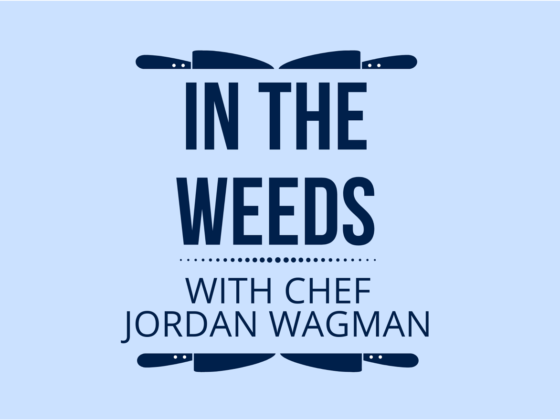is “restaurant quality food” difficult to re-create?
Preparation is Everything!
If you’re trying to re-create foods eaten at Alinea in Chicago – one of the best restaurants in the world – I wish you the best of luck! There are few people in the world that can replicate that kind of food. But I know that if I had a restaurant, the menu would be full of food that any home cook could re-create with ease.
My food has evolved into applying very basic techniques to fresh, seasonal ingredients. Simply put, I buy the best ingredients I can, and do very little to them and I serve to family, friends, and clients. Even Chef Grant Achatz, the genius behind Alinea, started by learning the basics of food preparation. And these basic culinary principles, combined with a few simple techniques, create flavour packed dishes and ‘plug and play’ recipes, for you and your family. I cook for me and mine, you should cook for you and yours.
‘Plug’ the ingredients you like, into the recipes I provide. Add a little more of something and a little less of another. It doesn’t make a difference as long as you think it through and cook with, L-O-V-E. That’s what mom would always say.
aside from love, my three favorite words that describe how to create that amazing, restaurant-quality food in your home include:
repeat after me; sear, deglaze, rest
These three words will change the way you cook, forever. Sear. Deglaze. Rest.
For example, achieving a gorgeous Sear on a chicken breast or steak, is easy if you follow two simple rules; make sure your pan is hot and don’t ‘chuchky’ with your food! For those who don’t speak Yiddish (I’m one) it very loosely means to leave food alone when searing and allow the heat to do its job.
Deglaze is a fancy French cooking term that describes the addition of liquid (water, chicken stock, wine) to a sauté pan, that has been used to cook meat, fish, vegetable or fruit. The liquid releases the bits of food stuck to the pan which is key to creating amazing flavour.
Finally, Resting meats and fish after cooking lets the protein relax before cutting and allows the juices to redistribute. This is possibly the most important technique you can adopt in your kitchen.
Sear
Searing any protein, vegetable or fruit in a sauté pan should be done when the pan is hot. You want to hear your food cook, which applies to grilling as well. You can always adjust the heat on a B.B.Q or the temperature on a stove-top but, and this is a HUGE but, always leave your food alone! Allow it to cook and create the perfect sear.
Have you ever grilled a piece of salmon or chicken breast only to have half of it stick to the grill? Do you know why that happens? You flipped too early! I like to call these people ‘premature flippers’. ? When you allow the food to sear, you create a crust which enables you to easily flip your food. You’ll know when your food is ready to flip because it will flip easily, fully intact. If you find your protein is burning, turn the heat down and continue cooking. It’s just that simple.
Deglaze
Once again, deglaze is just a fancy word for adding a liquid to a pan after searing that protein, vegetable or fruit. When you sear a chicken breast or sauté onions, tiny bits of food (known as fond) stick to the bottom of the pan and caramelize. And we want those small bits of big flavour. Just a little bit of fond can have a big impact on flavour. One of the best by-products are cleaner pans after cooking. Which means more time with your family and less time cleaning.
Rest
Resting proteins gives the juices time to distribute throughout the meat or fish after cooking, making them moist and tender. I remember swimming as a kid in FREEZING cold water in the middle of summer, and how it would take me forever to warm up. I’d be standing on the dock, shivering, with a towel around me and my mom rubbing my arms to keep me warm. I digress, but the point I’m making is simple. In order for me to warm up and ultimately relax again, it took a little bit of time.
The same premise applies to resting meat. A general rule is to rest your proteins for 30% of its cooking time. This means, if you roast your Thanksgiving Day turkey for six hours, you should rest the turkey for approximately two hours before carving into it.
If you slice into that turkey too early, the juices will be on your cutting board or on the bottom of the plate. Not inside the meat where it belongs. It’s a difference maker in your kitchen.
The food I create has very few ingredients but it needs to be executed well. This is why I Sear, Deglaze and Rest every single day.
Tips from Chef Jordan’s Kitchen
The only pans I use are both stove-top and oven friendly. This gives me the flexibility to transfer a pan from the stove to the oven and vice versa to continue the cooking process. Pans should have a thick base to help with heat distribution and shouldn’t have any rubber or plastic on the handle.
When I discuss certain topics in my cooking classes, people always ask about tenting food or covering it while resting. Don’t do this! You should never tent anything while resting. Tenting keeps the temperature of the meat higher for longer, continuing to cook it and not allowing it to relax. Secondly, if you tent, you are introducing unnecessary moisture to the meat or fish. If you are afraid that your meat will be cold, you can always flash it in the oven before serving but I assure you, the inside temperature will be perfect.

